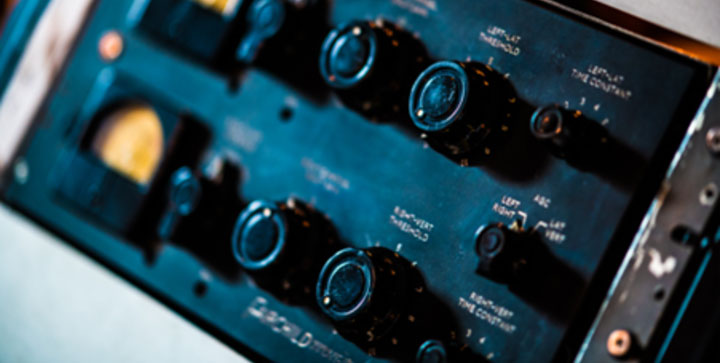
Blog
True love for great sound unites us.
Blog
True love for great sound unites us.
Have you ever read through microphone specifications? Then you will encounter the “Equivalent noise level” measurement, sometimes called self-noise.
In this article, you will learn how it impacts your recordings and when and why you should pay close attention to it when picking a microphone.
In very simple terms, self-noise, or equivalent noise level, is the noise that a microphone produces by itself, without recording an instrument or vocals.
To be more accurate, it is the sound pressure level that is equal to the RMS voltage that can be measured at the output connector of a microphone without an external sound source being recorded. This sound pressure level is a microphone's equivalent noise level (self-noise).
Microphones often also have a measurement of dynamic range in their specifications. This is calculated as the mics max SPL minus its self-noise.
We have prepared sound samples of an acoustic guitar to hear the difference in self-noise. One was recorded with the LCT 540 S, which has a remarkably low self-noise of only 4 dB(A). The other mic we used was an MTP 350 CM, a handheld condenser stage microphone with 25 dB (A) self-noise.
One set is a clear recording without any post-production, and the other has some compression added to it. Please use headphones to listen.
The microphone with the lowest self-noise
You might think that a few dB of noise here and there will not affect your sound quality. But, as with other things, the devil is in the details.
Let’s say you’re recording some vocals. You have a main vocal, but you might record harmonies and backup vocals to give the chorus more width and style. Ultimately, you may end up with five or more vocal tracks. Each of those tracks has a bit of self-noise from the microphone. This means the noise gets multiplied.
And what’s a vocal track without a bit of compression? So, you’re applying compression on all tracks, which makes the quieter parts louder. This also increases the overall volume of the already multiplied self-noise.
Depending on the recording situation, a microphone with relatively high self-noise can quickly escalate into having audible noise in your tracks.
Another factor that greatly influences how much noise you will hear in your signal is how much gain you use. If your sound source is further away from the mic, you need to increase the gain, which also increases the self-noise.
Before recording anything, always be mindful of the self-noise potential of the session and choose your microphone accordingly.
When you are recording high SPL sources, like drums (with around 119 dB SPL), the self-noise of a microphone doesn’t have a big impact on the quality of your recording.
If you look at the SPL of a sound source vs. the microphone self-noise, you are talking about a signal-to-noise ratio. The louder the noise, the lower the signal-to-noise ratio (assuming your microphone choice stays the same).
Tip: A higher signal-to-noise ratio means your recordings are “cleaner” and the noise of the microphone has less impact.
But, if you are recording a quiet part with an acoustic guitar, which can go as low as 70 dB, the noise in the recording can become audible much quicker.
And as mentioned before, compression increases the quiet parts and the noise. That makes self-noise for recording quiet sources even more important.
If you know you will record a very quiet source, whispered vocals, ASMR, or a very quiet instrument, it pays off to have a microphone with an ultra-low self-noise. The LCT 540 S has the lowest self-noise of any microphone, with 4 dB(A). So, it is extremely well suited for recording quiet and intimate sounds.
Check out the ASMR video below (use headphones).
When recording audio, you only care about the amount of noise that is in your recorded material in the end. Every piece of gear in your signal flow can introduce additional self-noise to your audio.
You can have an ultra-low self-noise microphone, but if your vintage preamp is not up to modern standards and adds additional noise to your signal, you will hear it in the end result.

Be mindful of your full signal chain when recording the cleanest possible signal. Modern audio interfaces have preamps that won’t have any audible effect on your recording in terms of noise. Know your tools and when to use which one to get optimal results.
LEWITT microphones with low self-noise
In microphone specifications, the equivalent self-noise is usually measured in dB (A). The A means it is using the A weighting. This type of measurement is used because it most resembles the way humans hear.
The A weighting takes into account that we don’t perceive all frequencies as equally loud.
You can read more about it on Wikipedia if you’re interested.